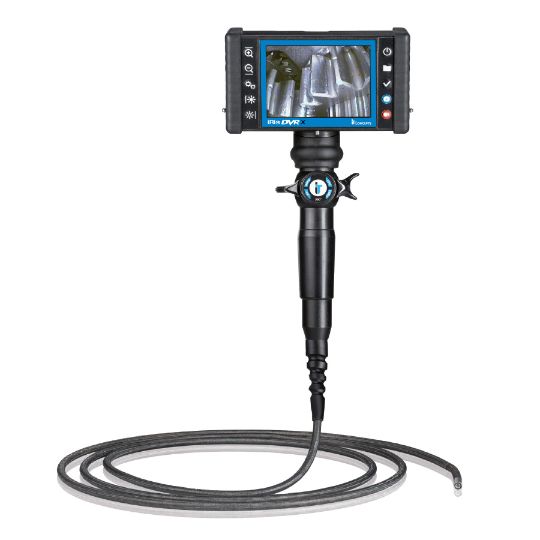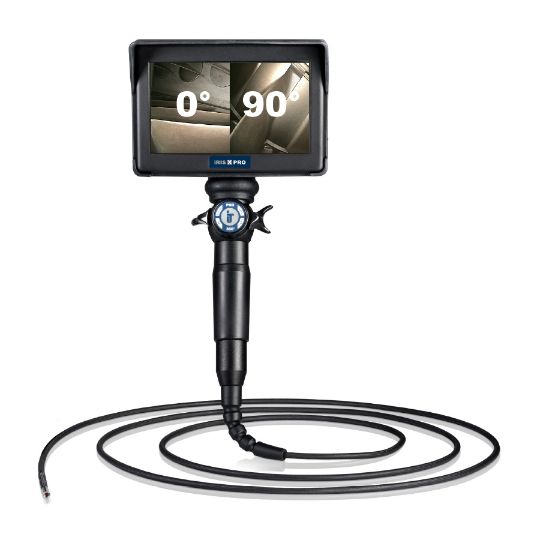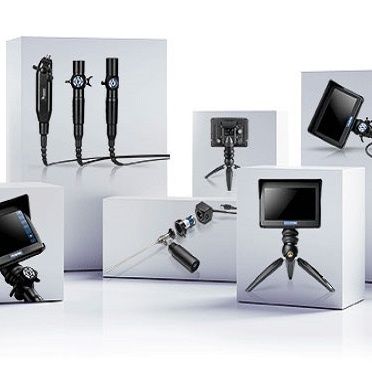Videoscopes and Borescopes
Nuclear Power Plants
Remote Videoscope Inspection Challenges in Nuclear Power Plants

areas to be inspected in the nuclear industry
The nuclear industry is very sensitive and requires regular monitoring of facilities to prevent many risks. With important issues, you have to use important means of control.
- Vessel and boiler inspection
- Steam turbine inspection
- Power generator inspection
- Steam generator of PWR (pressurized water reactor) inspection
- Reactor pressure vessels and internals
- Fuel assembly inspection
- Condenser inspection
- Core inspections and handling fuel element shipping container
- Remotely operated manipulators
- External part retrieval / cleaning
- Pressure vessel inspection
- Cooling system inspection
Even the best videoscope equipment doesn’t come out completely unscathed when exposed to radiation. If the insertion tube is used to inspect dirty-water-filled pipes, contamination is inevitable, and damage is also a possibility.
Videoscope equipment can be damaged when exposed to radiation. Insertion tubes used to inspect water-filled pipes can become contaminated, and decontamination can be considered too costly. A plant operator may opt to sacrifice the tube, leaving it permanently in the radiation area.
The insertion tube and the video borescope need to be robust enough to satisfy the requirements and expectations of the nuclear plant’s safety inspection and maintenance programs. That’s why manufacturers build systems with features that enable them to survive longer in radiation areas.
For personnel in nuclear power plants, time and distance are critical measurements when it comes to safe inspections. When workers need to enter a high-radiation area to examine a potential problem or make a routine inspection, proximity to radiation and the length of time the inspection takes can increase their effective radiation dose.
Suspected corrosion, or blocked conduits or vessels in the containment area, need to be handled immediately to help avoid accidental radiation leakage. In some cases, the reactor may need to be shut down so that workers outfitted in full-body protective gear can carry out the inspection. However, remote visual inspection (RVI) offers an alternative to this method, helping avoid costly shutdowns, saving time and operational costs, and reducing the risk of a harmful radiation dose for workers.
RVI offers a way for workers to carry out inspections in hazardous locations without physically entering the area. As well as letting workers maintain a safe distance from high-radiation areas, a videoscope equipped with a long insertion tube can enable the inspection of difficult-to-access locations, such as water conduits. The longer the insertion tube, the farther away the workers can be from the radiation.
- Resistant to Radiation Damage. Even after being exposed to high radiation dose, the laser illumination and CCD (charged coupled device) or CMOS (complementary metal oxide semiconductor) image sensor should still work.
- Inspect from a Safe Distance. Extra-long insertion tubes enable workers to make inspections from a safe distance. A longer tube can be fed into dirty water pipes in the radiation containment area, and workers can control and maneuver it from afar.
- Tough Tube. With such a long insertion tube, there’s a lot of potential for damage. However, the video borescope’s insertion tube should be engineered to resist abrasion with a protective tungsten braided outer layer.
- See the Light. A powerful light source that provides enough illumination to inspect the inside of a pipe or vessel from far away is essential. A powerful laser illumination system, coupled with wide, dynamic extended range image processing will deliver bright, contrast-balanced images across the entire depth of field.
- Keep It Clean. An air-powered lens cleaning system can be used to blow away dust and drip residue from the tip, so operators can have a clear view, even in dirty pipes.



